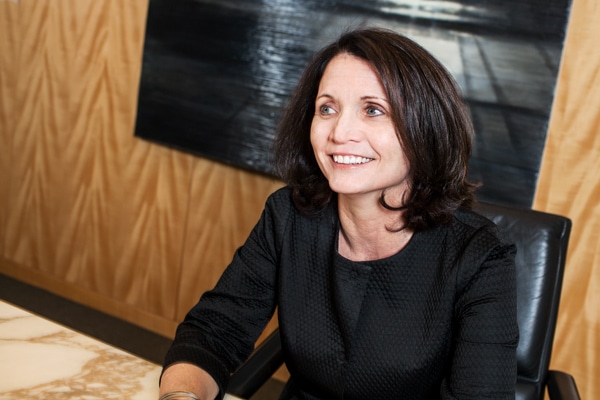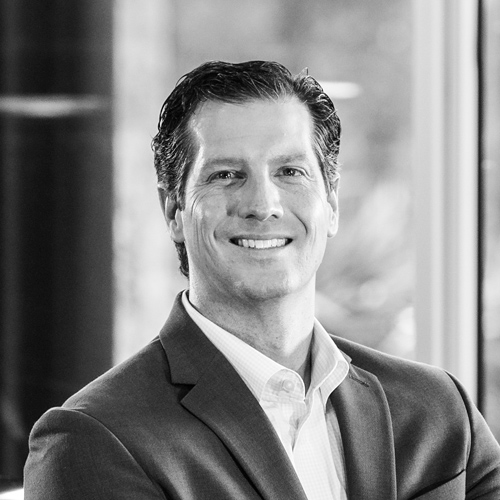
XL Group, through its subsidiaries and under the XL Catlin brand, sits at the heart of the global insurance industry with a leading presence at Lloyd’s of London as well was being a top-ten global reinsurer with about $62.4 billion in total assets. Serving industrial, commercial, professional firms, insurance companies, and other enterprises throughout the world, XL has more than seven thousand employees across twenty-nine countries. XL Catlin is the global brand used by XL Group Ltd following its 2015 acquisition of Catlin Group Ltd, then the number one underwriter at Lloyds, for roughly $4.1 billion.
As XL Catlin adapts to increasing regulation in the property and casualty (P&C) industry, Kirstin Gould, the organization’s executive vice president, general counsel, and secretary, has helped lead XL through some of the biggest challenges of the past decade.
Gould joined the company in 2000, when it was known as XL Capital and only had about one thousand employees worldwide. In 2007, just before the worldwide financial crisis, she became the company’s general counsel. Successfully navigating through this critical time for the company is one of Gould’s greatest professional achievements.
In 2016, Gould helped the company redomesticate from Ireland to Bermuda. One reason the company moved its holding company to Bermuda is because of the island’s Solvency II equivalence designation. Solvency II is an EU law that went into effect in January 2016. The legislation affects the amount of capital insurance companies are required to have, which is an effort to help prevent insolvency.
Bermuda is one of only a handful of countries outside of the EU that has been designated as Solvency II equivalent. Solvency II, however, did not only affect the company’s decision to redomesticate to Bermuda, but the law was also one of the considerations that led Gould to separate the legal and compliance functions into two separate teams within XL Group—a decision that Gould spoke with Profile about at length in addition to her thoughts on Brexit planning, overall strategic planning, and staying ahead of the curve in the global insurance industry.
Was Solvency II the impetus for separating compliance and legal into two distinct departments?
No, it was not the impetus. There were a couple of factors. One was looking at what other companies are doing in terms of the compliance function. I got a sense of this by talking with many people from our industry and the industries we serve. It seemed like this was part of a developing trend, and I wanted to get in front of it rather than be behind it, in particular because of the increasing regulatory burden in our industry.
Because we are a global company in a highly regulated space, we have to keep up with the increased demands of legislation and regulation around the world. We also want to ensure that we are adequately resourced and organizationally designed to meet those challenges.
Solvency II looks at compliance as a key function. So, Solvency II contemplates internal audit, risk, actuarial, and compliance as separate key areas for an effective system of governance. Solvency II doesn’t mandate a separation of compliance from the legal function, but I was also looking at Solvency II in terms of what regulatory expectations would be for the compliance area going forward.
So, this was a consideration for me but not a driver. I was thinking in terms of governance, design, and getting ahead of the regulatory expectations for us.
What was the planning process like for officially separating compliance and legal functions into two distinct teams at XL Group?
The new chief compliance officer for XL Group Ltd. was announced in May 2016, and he came on board in October 2016. We rolled out the new compliance function to the teams in December 2016, but it’s something I’d been thinking about and designing for quite some time before I went to our CEO with a concrete proposal.
I have a very good relationship with our CEO Mike McGavick. We’ve been working together for about ten years. The dialogue regarding the future design of the team was very good. Mike embraced the changes I proposed as did the audit committee and we moved forward.
What sort of effect has Solvency II had on XL Group outside of being a factor in your decision to redomesticate your holding company to Bermuda?
Solvency II had a big impact on us and the insurance industry as a whole as it has been a very complex regulatory system. It came into effect on January 1, 2016, so it is still fairly new. We would like to see some aspects of the unnecessary requirements be scaled back to what is actually needed to appropriately regulate our industry, which is very different than the banking industry, which some regulators have used as a model for the P&C industry. Unnecessary regulation can slow down innovation in our industry.
How has the first year gone with compliance and legal operating as separate functions?
I think it’s working very well. We have a lot of experienced attorneys who have been practicing for a long time and know our business really well. We still have individuals with dual hats, and even if we didn’t, it requires a lot of coordination between the two departments to make it work. We’re still very much connected.
We held a global off-site of the legal and compliance functions together earlier this year, and we hold global calls about every six weeks with both teams. As we move forward, we’re also figuring out what works and what doesn’t work. For example, we’re working on the budget for 2018, which is the first time we’re doing a separate compliance budget. It has started a good dialogue about what we’re doing and why we’re doing things. One of the big things that our company is focused on is continuous improvement. Having these sorts of discussions in the organizational and budget areas are very useful in terms of continuous improvement.
People on the teams have been very receptive, and I believe a large part of this can be attributed to the good, collaborative relationship I have with the chief compliance officer. People see that and understand we’re both trying to achieve the best outcome for the company, and I think it’s all working quite well.
What advice would you give someone who wanted to separate legal and compliance?
First, you have to determine whether it really makes sense for your company. Don’t just do it for the sake of doing it. There should be a real rationale behind it. It should make sense for your company and for your shareholders. Do an honest exercise around that, and don’t be afraid of where that could lead.
XL just announced its plans to relocate its principal EU insurance company from the UK to Dublin in response to Brexit. What advice would you give to other companies facing similar challenges?
Well, if they haven’t started planning for Brexit by now, I think they’re a bit behind the ball. One huge factor for us in announcing our plans now is giving certainty to our clients and our brokers. I think the sooner you can give certainty to stakeholders, to clients in particular, the better.
Moving forward, what other trends are you trying to stay ahead of?
The data and analytics space is an obvious one. That’s a big area because of the pressure on budgets as well as other efficiencies and insights we can gain. We’re looking at how to drive efficiency in our department, making sure our attorneys are working on the most valuable aspects of what they could be working on. Sharing data with the business leaders helps them understand what the lawyers are working on and why. Informing the business leaders and staying ahead of the curve in service delivery is what we’re focused on.
Photo: Thomas Donley
Congratulations to Kirstin on this well-deserved recognition. ASW is proud to be associated with the XL Catlin organization and to partner with their dedicated and professional team led by Kirstin. ASW greatly values our relationship with XL Catlin and Kirstin and likewise aims at all times to provide the highest caliber of service to meet the needs of our clients. More information on ASW Law is set out at www.aswlaw.com















